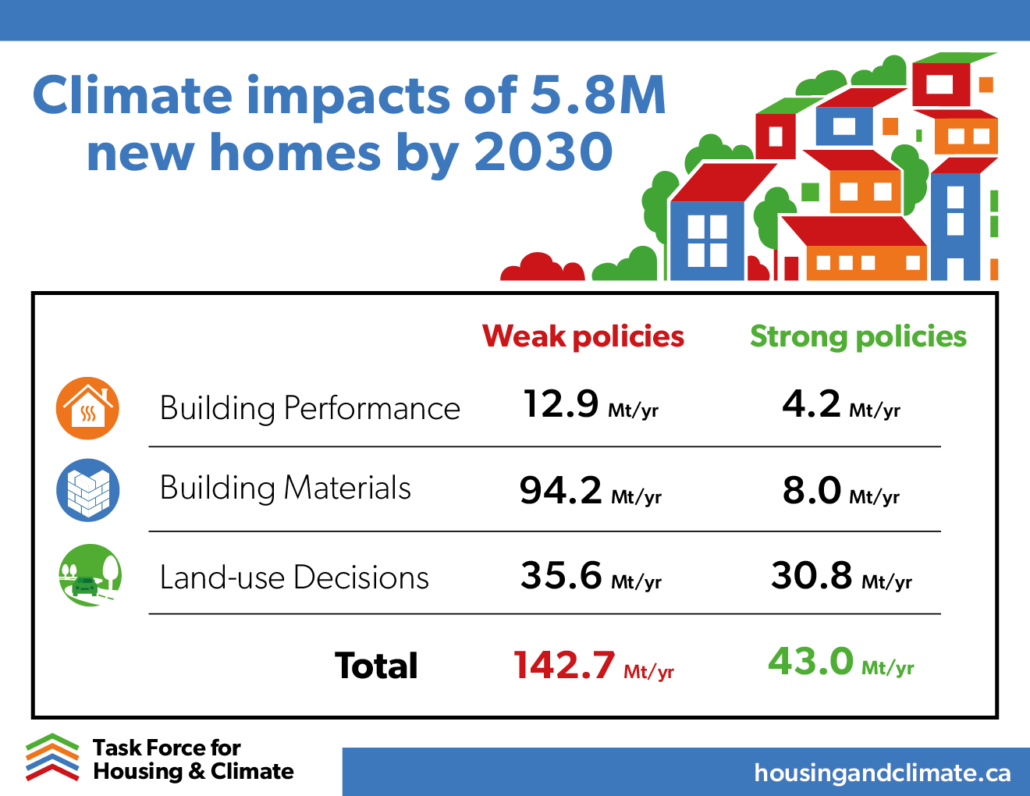How cities can promote affordable housing while limiting emissions
Canada needs 5.8 million new homes to restore affordability, according to Canadian Mortgage and Housing Corporation (CMHC). With new construction, come new greenhouse gas emissions. Without strong climate policies, these new homes could lock in 142.7 megatonnes of greenhouse gas emissions annually, according to research by the Federal Task Force for Housing and Climate. That’s equivalent to consuming an additional 330,000 barrels of oil per year.
Denser developments
So what can cities do? Jeremy Murphy, an urban planner and Principal at SSG, suggests policies focused on density. Homes in low-density areas make residents dependent on vehicles and use more energy than same-size homes in dense areas. Not to mention, sprawl is costly: as developments fan out, municipalities have to develop and maintain pricey new infrastructure. In contrast, increasing density reduces the need for new infrastructure and gives people the choice to walk, cycle, or take transit instead of driving cars
Communities should evaluate the potential climate impact of residential land-use policies to figure out the best mix. City staff can deploy SSG’s Land Use Impact Calculator (LUIC), a free Microsoft Excel add-on, to evaluate the potential climate impacts of various residential land-use policies. In fact, the Federal Task Force for Housing and Climate used this very tool for its national analysis.
Efficient, electrified buildings
Second, communities can focus on efficient, electrified buildings powered by renewable energy. Setting building energy use intensity targets minimizes potential emissions. For example, the City of Toronto’s Green Standard requires new buildings to target total energy use intensity (TEUI) and thermal energy demand intensity (TEDI) based on the community’s greenhouse gas reduction goals. Many smaller municipalities are following larger cities’ lead by creating their own green building or development standards with similar requirements.
To be sure, some communities are wary of greener building standards over concerns they’ll increase costs or make projects too complex. However, as research commissioned by the Task Force notes, initiatives like the Local Energy Efficiency Partnerships program and efforts to use technology to increase productivity in the construction sector help communities and developers deploy technologies and practices to build higher-performance homes faster and more affordably.

Graphic showing the impact of policies on greenhouse gas emissions from building 5.8 million new homes (Image: Task Force for Housing & Climate).
Building materials matter
Third, address the carbon embodied in construction materials—a significant driver of climate change. Municipalities can reduce the impact of new buildings by encouraging smaller basements and other features that reduce building materials. Local governments can also pass bylaws and building codes requiring low-carbon concrete.
In 2019, the County of Marin in California’s Bay Areas passed North America’s first low-carbon concrete code. Since then, other communities have followed suit. Canada saw its first low-carbon concrete bylaw in 2021 in the City of Langford, BC. This code amendment toolkit from Alameda County, CA, provides tips for other municipalities looking to crack down on embodied carbon.
Consider the climate along with affordability
The situation is as urgent as the housing affordability crisis. If construction continues as usual, Canada’s emissions are on track to soar and overshoot our climate action goals. The upshot? We know what’s required to reduce pollution from new buildings and we can draw inspiration from diverse communities already cutting these emissions.
—
Want to chat about how we can help reduce emissions in your community? Give us a shout at info@ssg.coop.




